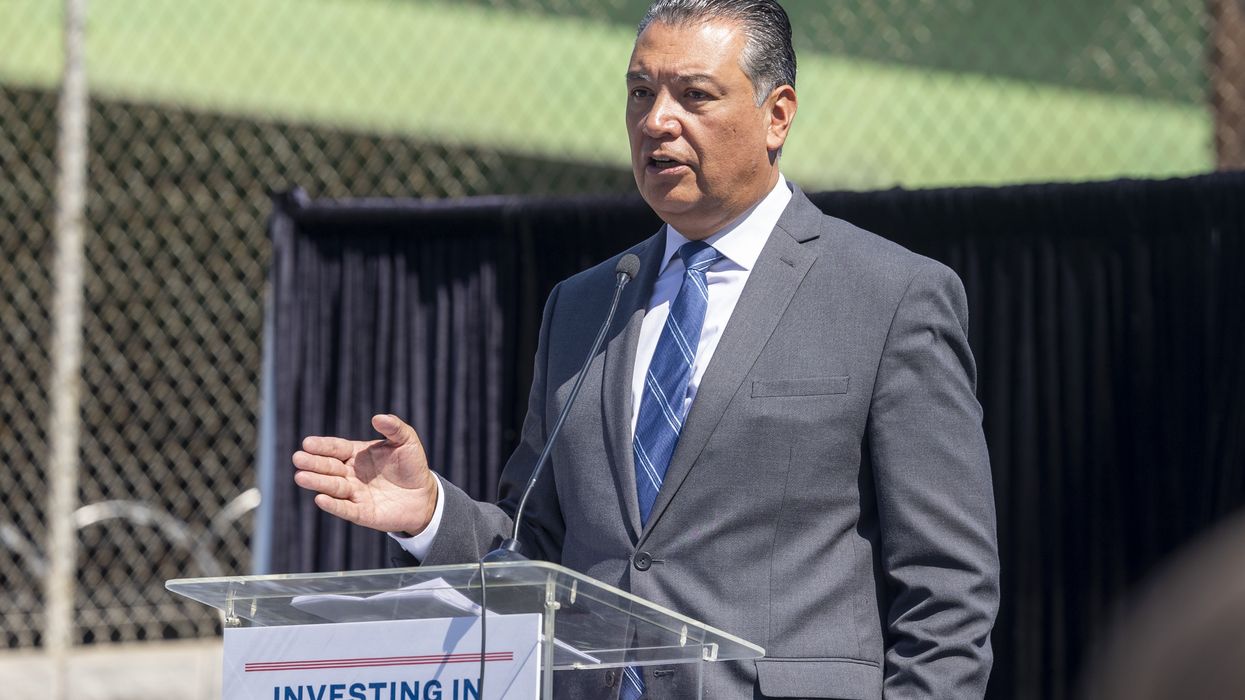Parliamentarian Blocks 'Big, Ugly Bill' Public Lands Sale and Offshore Drilling Policies
While calling the public lands decision "an important victory," one campaigner also warned that "this threat is far from over."
Critics of Republican efforts to continue wrecking the planet celebrated some small victories after the U.S. Senate parliamentarian on Monday advised that multiple provisions cannot be passed as part of a megabill that only requires a simple majority.
Senate Parliamentarian Elizabeth MacDonough found that some GOP legislative proposals about offshore drilling and mandatory public land sales could not be included in the package due to the so-called Byrd Rule, which bars provisions considered "extraneous to the purpose of implementing budget resolution policies."
Specifically, MacDonough axed a provision that deems offshore oil and gas projects as automatically compliant with the National Environmental Policy Act (NEPA), nullifying their environmental review processes. She also ruled against a proposal requiring offshore fossil fuel leases to be issued to successful bidders within 90 days after the sale, and a separate mandate for the sale of millions of acres of public land.
"This wasn't just an obscure and damaging policy—it was an assault on the places where generations of Americans have hiked, hunted, fished, camped, and connected with the natural beauty of our country."
MacDonough also blocked provisions allowing natural gas exporters to pay to have their project deemed in the public interest; requiring a permit for the construction of Ambler Road, a controversial mining route in Alaska; directing the interior secretary to hold yearly geothermal lease sales; and revoking the secretary's discretion to reduce fees for solar and wind projects on Bureau of Land Management land.
Other provisions under the Senate Energy and Natural Resources Committee's jurisdiction that are still being reviewed include policies that would require that 90% of the revenue from lease sales in the Cook Inlet go to the state of Alaska, starting in 2035; mandate fossil fuel lease sales in the National Petroleum Reserve in Alaska; and force the interior secretary to approve new coal lease applications.
Senate Majority Leader Chuck Schumer (D-N.Y.) on Tuesday applauded MacDonough's decision on the "cruel" GOP policy that "would have gutted America's public lands and auctioned them off to the highest bidder, in yet another bid to benefit the wealthy."
"This wasn't just an obscure and damaging policy—it was an assault on the places where generations of Americans have hiked, hunted, fished, camped, and connected with the natural beauty of our country," Schumer said. "Republicans tried to rip away hundreds of millions of acres of public land—not to help families, not to solve real problems—but to hand yet another gift to the wealthy and well-connected. It was outrageous, it was shameless, and it would have forever changed the character of the country."
"Senate Democrats fought tooth and nail to keep public lands in public hands because these lands belong to everyone—not just the privileged few," Schumer said of Sen. Mike Lee's (R-Utah) proposal that put those lands at risk.
Senate Energy and Natural Resources Committee Ranking Member Jeff Merkley (D-Ore.) also put out a statement welcoming MacDonough's latest moves against what critics are calling the "Big, Ugly Bill" and highlighting his party's opposition.
"Democrats continue to show up and fight every provision of this Big, Beautiful Betrayal of a bill, because this bill is an attack on workers and families everywhere," Merkley said Monday. "Democrats will not stand idly by while Republicans attempt to circumvent the rules of reconciliation in order to sell off public lands to fund tax breaks for billionaires. We will make sure the Byrd Rule is followed and review any changes Republicans attempt to make to the bill."
Like the Democratic leaders, Trust for Public Land CEO and president Carrie Besnette Hauser on Tuesday called MacDonough's latest decisions "an important victory in the fight to protect America's public lands from short-sighted proposals that would have undermined decades of bipartisan work to protect, steward, and expand access to the places we all share."
"Across the country and across party lines, Americans have made it overwhelmingly clear: They do not want to see their public lands sold off to the highest bidder. Land sell-off proposals are deeply out of step with the will of a vast majority of Americans," she noted. "But make no mistake—this threat is far from over. Efforts to dismantle our public lands continue, and we must remain vigilant as proposals now under consideration including a proposal to roll back the landmark, bipartisan Great American Outdoors Act and threaten full, dedicated funding for conservation through the Land and Water Conservation Fund (LWCF)."
"Public lands are not political bargaining chips, but national treasures that power local economies, strengthen public health, and connect millions of people to the outdoors every day," she added. "Trust for Public Land will continue to stand with communities, tribal nations, and bipartisan champions in Congress to defend public lands and ensure they remain protected, accessible, and thriving—for all people, for all future generations."
Senate Majority Leader John Thune (R-S.D.) has suggested that Republicans will not overrule the parliamentarian. According to Reuters, he told reporters on Monday that the review process is "something we have to go through," and "they're working through it. And in some cases, as things are flagged, we're making counteroffers."
Although MacDonough dealt a blow to the GOP agenda, the Trump administration on Monday continued its assault on the planet, announcing plans to end a rule that protects tens of millions of acres in the National Forest System, which would enable road development and timber production on those lands.


